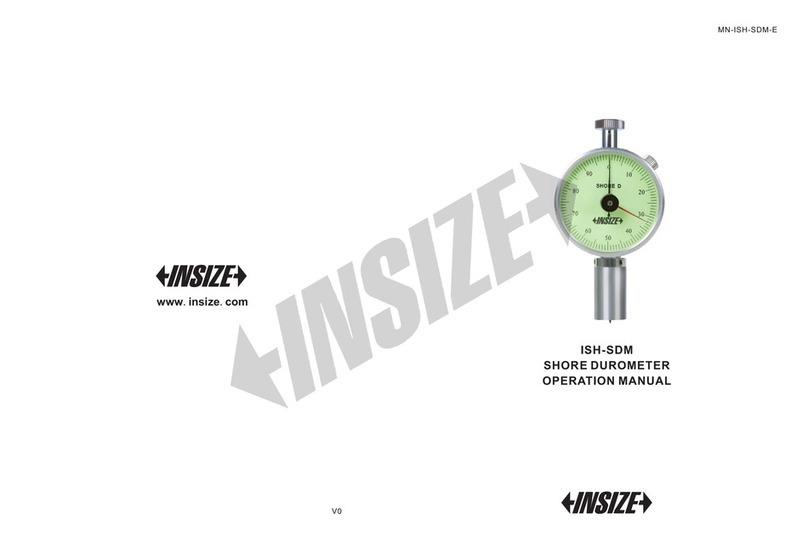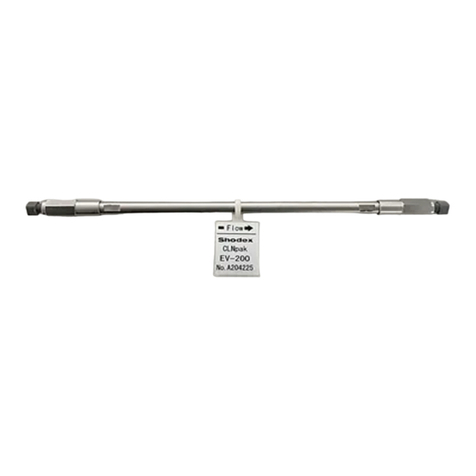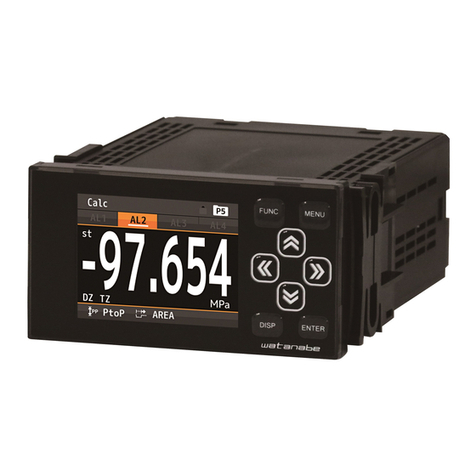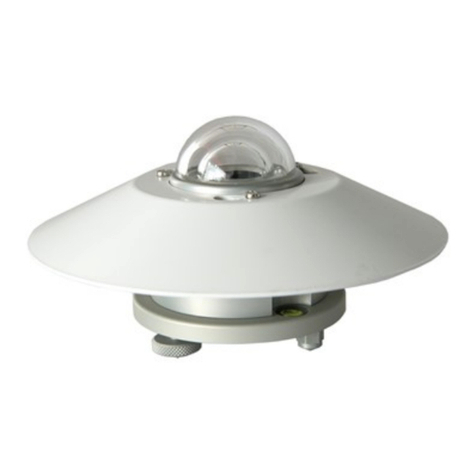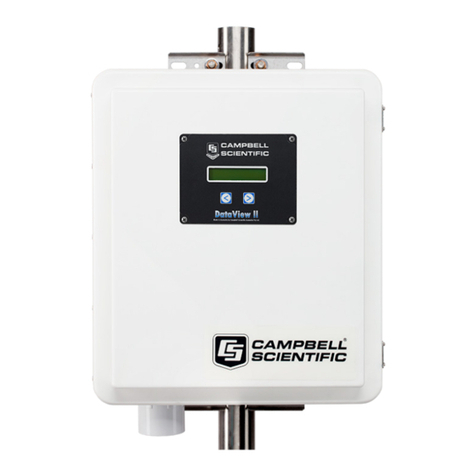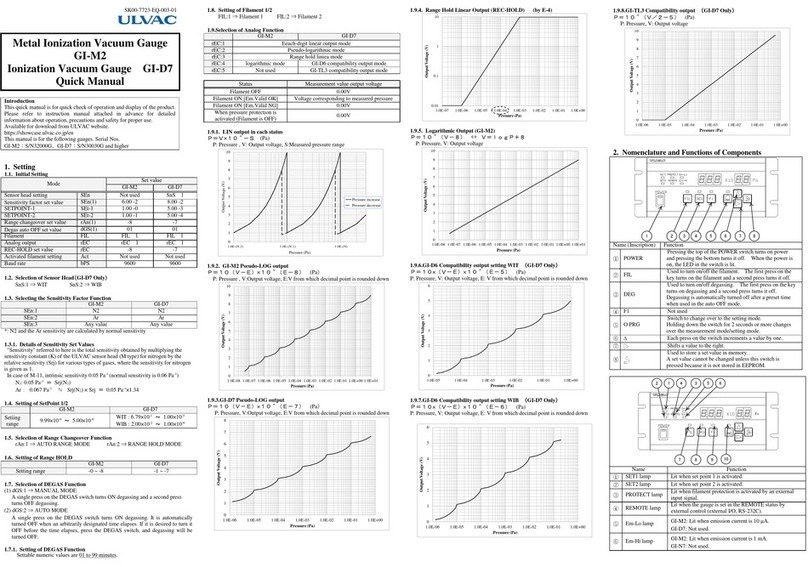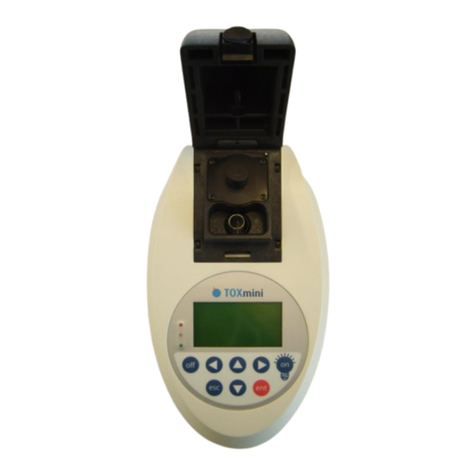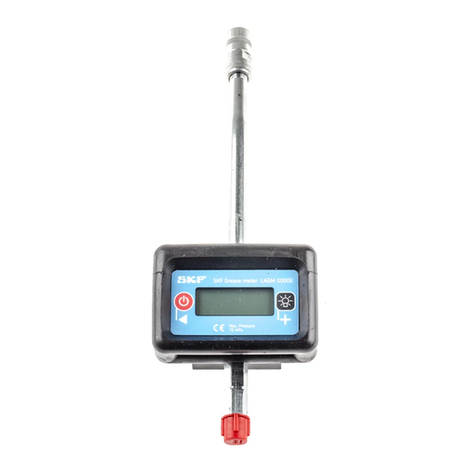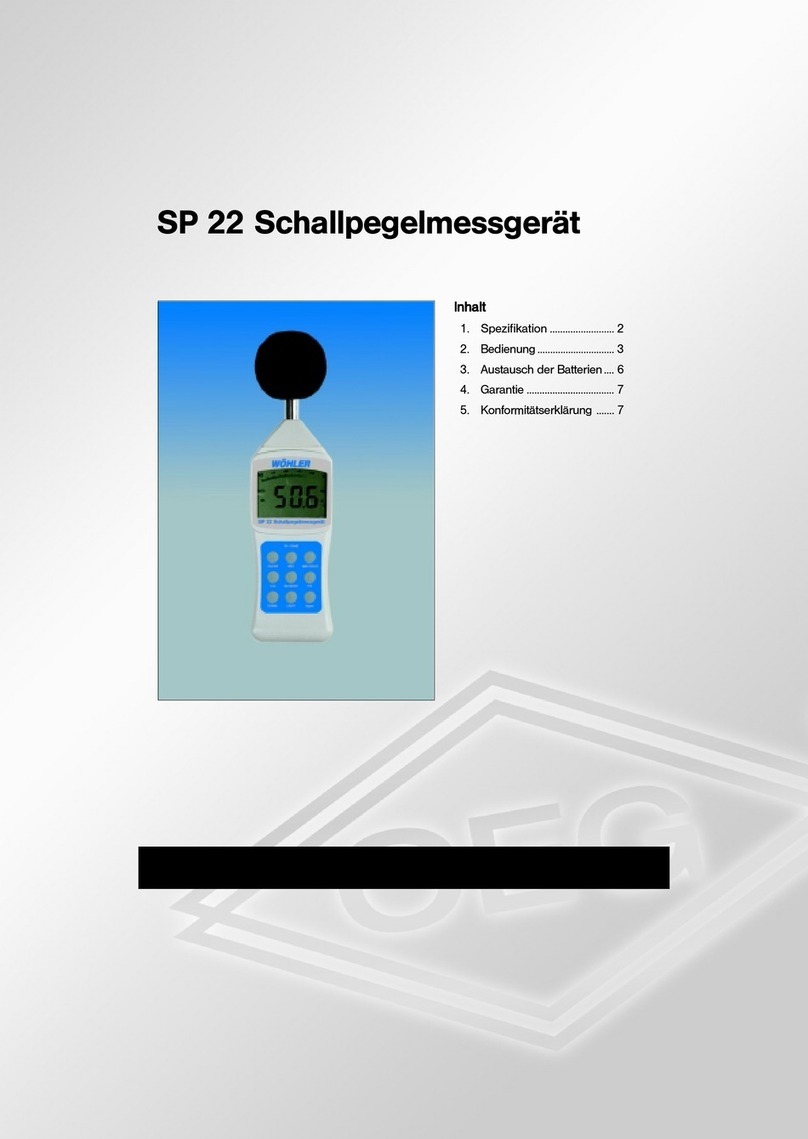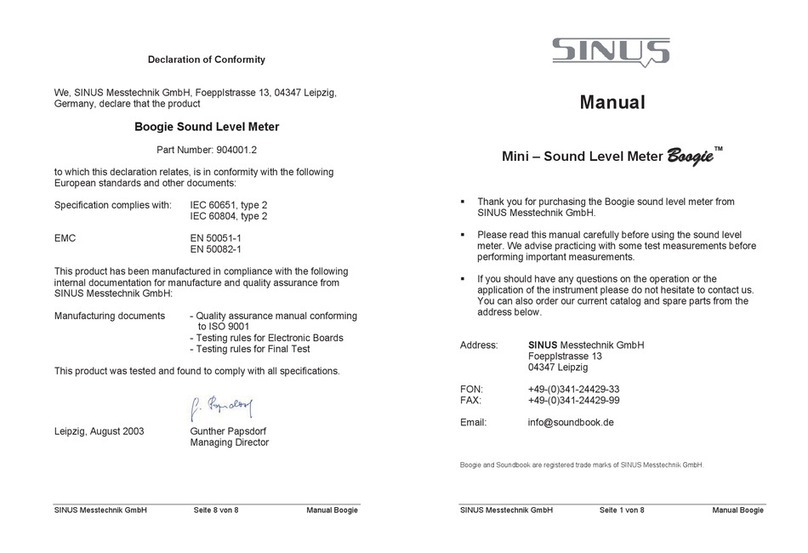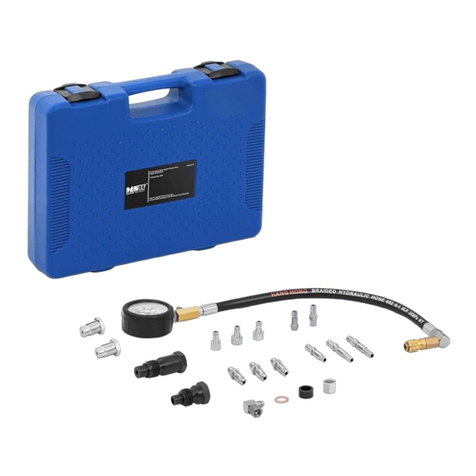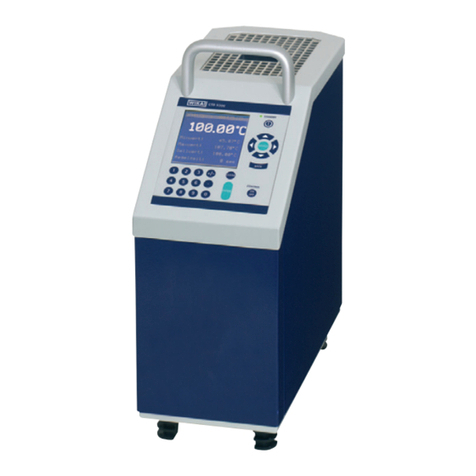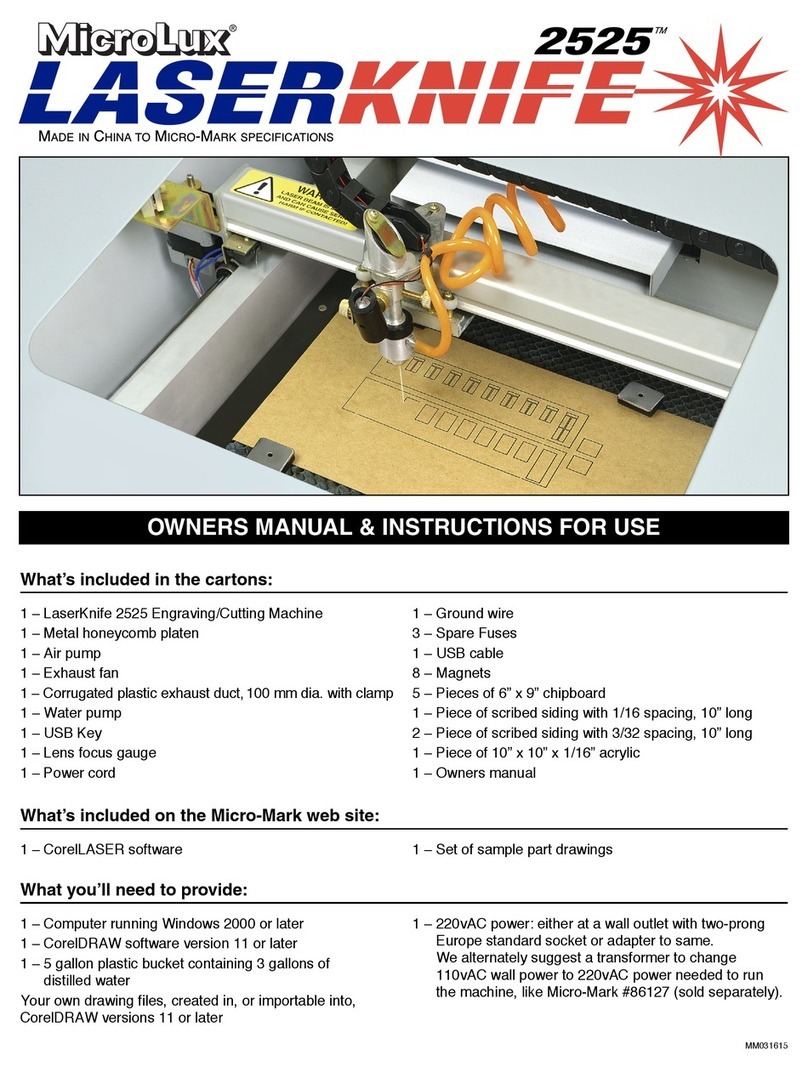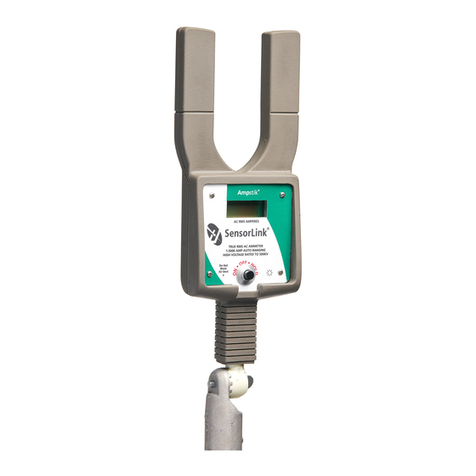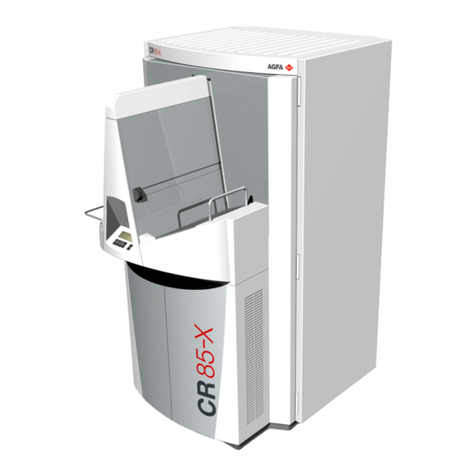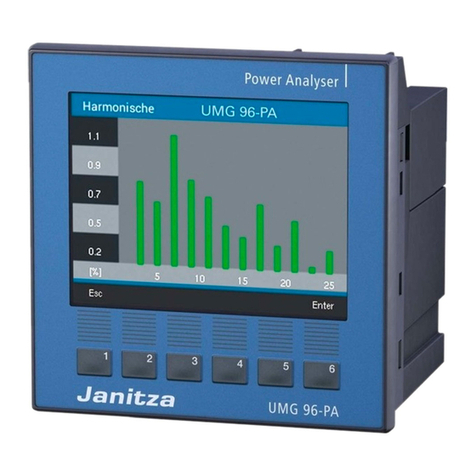insize ISU-200D User manual

www.insize.com
ISU-200D
ULTRASONIC THICKNESS GAUGE
OPERATION MANUAL
MN-ISU-200D-E

1
Attention
In order to obtain good measurement precision, you need to clear
away the rusty, sundry, grease, etc. on the working surface.
Please use the couplant on the working surface, measure
repeatedly around the target area and take average value.
Please clean the couplant on the transducer and working surface
after measure.
Please don’t pull the transducer cable when use the instrument.
2
Overview
The Thickness Gauge is a digital ultrasonic thickness gauge. Base on the
same operating principles as SONAR is capable of measuring the
thickness of various materials with accuracy as high as 0.01mm or
0.001inch. It is suitable for a variety of metallic and non-metallic
materials.
1
3
2
Specification:
Resolution: 0.01mm (range<100mm), 0.1mm (range 100mm)
Accuracy: ±0.05mm (range < 10mm), ±(0.01+0.5%H)mm (range
10mm). H is the thickness to be measured.
Velocity: 1000~9999m/s
Structure:
Measuring principle:
The digital ultrasonic thickness gauge determines the thickness of a
part or structure by accurately measuring the time required for a short
ultrasonic pulse generated by a transducer to travel through the
thickness of the material, reflect from the back or inside surface, and
be returned to the transducer. The measured two-way transit time is
divided by two to account for the down and back travel path, and then
multiplied by the velocity of sound in the material. The result is
expressed in the wall-known relationship:
H is the thickness, v is the velocity, t is the time.

: Sign of difference mode.
: Sign of scan mode.
3
Key Functions
4
Key Function
--Turn on/off the instrument (long press)
--Turn on/off the backlight (short press)
Data save: after get a new reading, press this key once and the
screen appear “*”, then long press this key to save the reading.
Function key: continue to press this key and select the functions
then press enter key to set.
Velocity key: continue to press this key and select the velocity
and you can press the up or down keys to adjust the value.
Up key and quickly enter scan mode
Down key and quickly enter alarm mode
Enter key
Calibration key
Basic operations
1
3
2
Power on and off:
Long press the key until screen show the picture as below:
Insert the plus of the probe into the socket on the instrument.
FILE1: File selection(5 files in total).
5M: Probe selection(4 kinds of probe: 2M, 5M, 7M, H2M).
MENU: Menu selection.
20:30: System time.
: Sign of coupling.
: Battery information(When it is , the battery should
be charged).
: Sign of alarm mode.
Transducer setting:frequency
The frequency of the transducer should be preset to the instrument
before measuring operation. This enables the user to select the
transducer type among supported transducers according to frequency
and diameter depending on application requirements.
Use the following steps to select your transducer frequency:
Press the key to select the desired frequency of the probe.
On the measurement screen, press the key twice to activate the
transducer frequency tab.
Press the key back to the measurement screen.twice
Sound velocity setting:
In order for the gage to make accurate measurements, it must be
set to the correct sound velocity for the material be measured.
Use the following steps to select your transducer frequency:
On the measurement screen, press the key to preset commonly
using velocity.
Use the and to adjust the value until it matches the sound
velocity of the material to be measured.

56
4
Zero setting:
Plug the transducer into the instrument, make sure that the
connector are fully engaged. Check that the wearface of the
transducer and surface of the zero disc is clean.
Select the frequency(5M) and sound velocity(5920m/s).
Apply a single droplet of couplant to the face of the zero disc.
Press the transducer against the probe disc, makeing sure that
transducer sits flat against the surface.
While the transducer is firmly coupled to the zero disc, the
thickness value is shown on the screen.
Press the key to set the value to 4.00mm.
5
Thickness measurement:
When the screen is displaying thickness measurements, the
display will hold the last value measured, until a new
measurement is made.
Plug the transducer into the instrument, make sure that the
connector are fully engaged. Check that the wearface of the
transducer and surface of the workpiece is clean.
Select the frequency and sound velocity according to material
of the workpiece.
Apply a single droplet of couplant to the face of the workpiece.
Press the transducer against the , makeing sure that
transducer sits flat against the surface.
workpiece
While the transducer is firmly coupled to the , the
thickness value is shown on the screen.
workpiece
6Calibration to a known velocity:
Make measurement of the test block whose thickness is
known(for example: 10mm) according to chapter “Thickness
measurement” correctly.
After the thickness value shows on the screen, press key
and remove the transducer from the surface, the display will
hold the last measurement made. At the same time, sign *
shows on the right of the screen as below.
Press key or to change the value to the exact value
10.00mm.
Press key , the sound velocity of the material measured will
show and it is saved as one of the commonly using velocities
at the same time.
System setup
1Scan mode setting:
While the gauge excels at making single point measurements, it
is sometimes desirable to examine a larger region, searching for
the thinnest point. The gauge includes a feature, called Scan
Mode, which allows it to do just that.
On the measurement screen, press the key multiple times to
activate the【MENU】tab.

78
Press key to enter the main menu interface.
Press key or to move the cursor to “System setup” and
then press to enter it.
Press key or to move the cursor to “Scan Mode” and then
press to switch on or off scan mode as below.
Press key to confirm setting and return to main menu
interface.
2
Alarm mode setting(Limit Setting):
The Thickness Gauge will alarm when the measured value is
beyond measurement range. The buzzer will ring if the measured
value reaches pre-set lows or pre-set highs.
Enter alarm mode setting according to “ scan mode setting”.
Press to turn on the alarm mode and enter menu ”LOW
LIMIT” as below.
Press key or to change lower limit.
Press key to enter menu ”HIGH LIMIT” to set high limit.
Press key to confirm setting and return to main interface.
3Difference mode setting:
Enter difference mode setting according to “ scan mode
setting”.
Press to turn on the difference mode and enter menu
“TARGET MENU” as below:
Press key or to change the target value and press key
to go back.
Press key to confirm setting and return to main interface.
When making measurement, if the measurement value is larger
than target value, mark is replaced by + and if the measurement
value is larger than target value, mark is replaced by -. The value
showing on the screen is absolute of measurement value minus
target value.
4Two-point CAL setting:
This procedure requires that the operator has two known
thickness points on the test piece that are representative of the
range to be measured.
Enter two-point CAL setting according to “ scan mode setting”.
Press to turn on the two-point CAL then press key return
to main interface.
When thickness value shows on the screen, press key to
make 2-Point CAL, the tester remind you to make thin
calibration as below:

910
Press key to “froze” the reading, then press key or to
change the value to standard value and then press key to
confirm. At the same time the tester remind you to make thick
calibration as below:
Make thick calibration just as thin calibration.
Press key to confirm and return to main interface.
Send data to PC
1
There are 5 files (FILE1-FILE5) that can be used to store the
measurement values inside the gauge. At most 100 records can be
stored to each file. On measurement screen, press the key multiple
times to activate the【FILE name】tab as below:
Storing a reading:
Use the key to select the desired file to save the data.
After get a n ew rea ding, press key once and the
screen appear “*”. Then long press this key to save the
reading.
Long press key to save the reading.
2
Viewing stored readings:
Press key to activate the【FILE name】tab and press key
to select the desired file to view the data.
Press key to view the data saved as below:
Press key or to view all data saved.
Press key to exit.
3
Delete data
Press key when you are viewing data saved to delete that data
and the next data will show on the screen.
You can also enter the function menu to delete single file or all
files.
:
Connect instrument to the computer by using USB cable.
Memory management
1
Put the software CD into the CD-ROM, double click the “USB
Driver” to install the USB cable drive. After installation you need
enter into Device Manager to ensure the interface code. Like the
following picture it is COM4.
2

11 12
Double click the “hypertrm” and input a name for the connection
as following picture, then click “OK”.
3
Select the interface code of the USB cable.
4
Set the parameters as following picture then click “OK”.
5
Enter the function menu and select the tab “Send data to PC”,then
press key.
6
The screen will display the data saved before, now you can edit,
save, print the data.
7
Standard delivery
1pc
1pc
1pc
1bottle
1pc of each
Main unit
Transducer ISU-PT12
AC/DC adapter
Couplant
USB cable and software disc
ISU-PT08
Transducer
Optional Accessory

13 14
Sound velocity
Material Sound Velocity
Inch/µS M/s
Air
Aluminum
Beryllium
Boron Carbide
Brass
Cadmium
Copper
Glass(crown)
0.013
0.250
330
6300
0.390 9900
0.510 12900
0.430 11000
4300
2800
4700
5300
Alumina Oxide
0.170
0.110
0.180
0.210
Glycerin
Gold
Ice
Inconel
Iron
Iron (cast)
Lead
Magnesium
Mercury
Molybdenum
Monel
Neoprene
Nickel
Nylon, 6.6
Oil (SAE 30)
Platinum
Plexiglass
Polythylene
Polystyrene
Polyurethane
Quartz
Rubber, Buty
Silver
Steel, Mild
Steel, Stainless
Teflon
Tin
Titanium 0.240
0.130
0.060
0.228
0.233
0.140
0.070
0.230
0.0700
0.093
0.070
0.110
Tungsten
Uranium
Water
Zinc
0.200
0.130
0.584
0.170 4200
1480
3400
5200
6100
3300
1400
5800
5920
3600
1800
5800
1900
2400
1900
1700
3300
1700
2600
5600
1600
5400
6300
1400
5800
2200
4600
5900
5700
4000
3200
19000.075
0.130
0.160
0.220
0.230
0.180
0.085
0.230
0.057
0.250
0.210
0.063
0.220
0.100
0.067
0.130
Table of contents
Other insize Measuring Instrument manuals
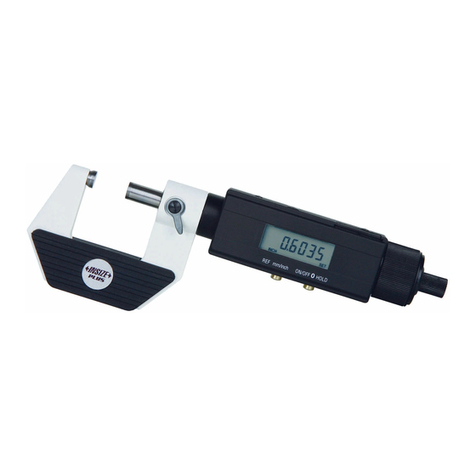
insize
insize PLUS 3631 Series User manual
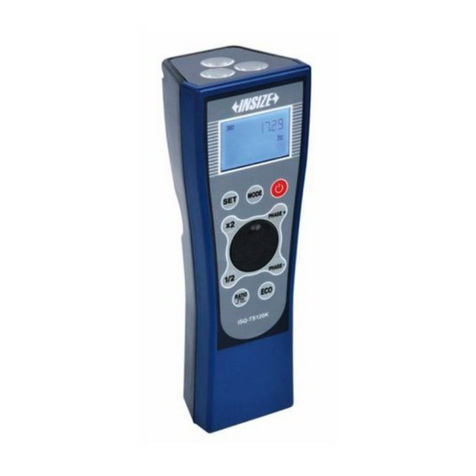
insize
insize ISQ-TS120K User manual
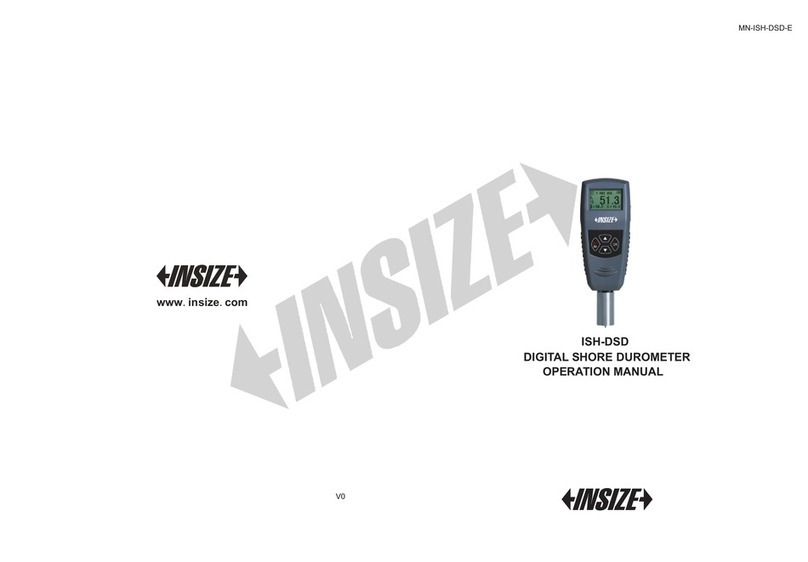
insize
insize ISH-DSD User manual
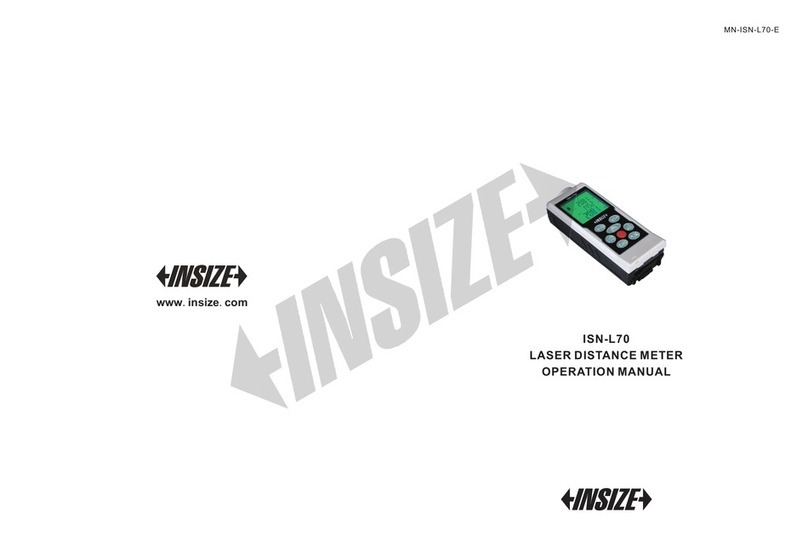
insize
insize ISN-L70 User manual

insize
insize ISU-250C User manual
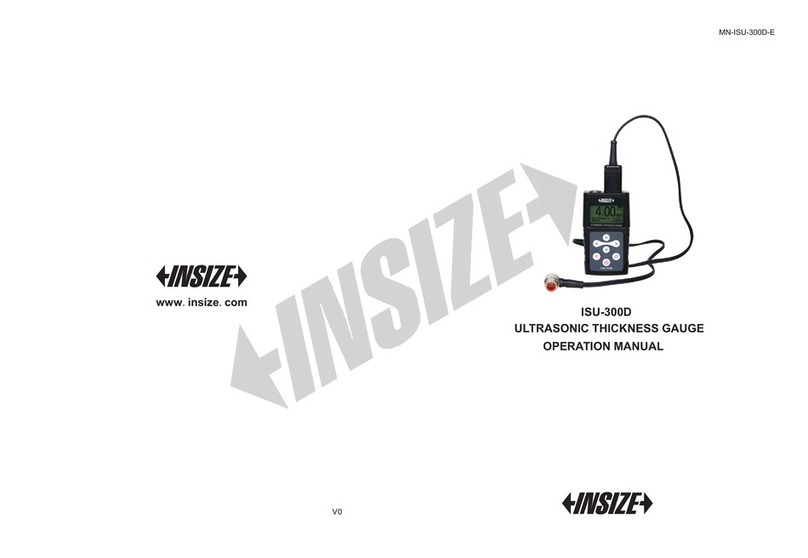
insize
insize ISU-300D User manual
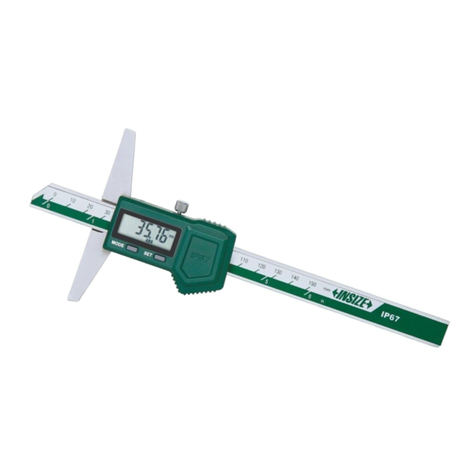
insize
insize 1149 Series Technical manual
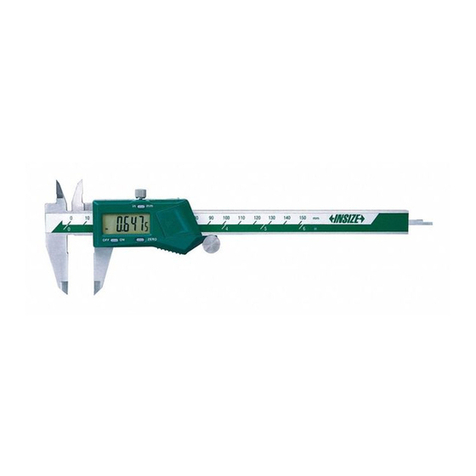
insize
insize 1113INS Technical manual

insize
insize ISF-DF Series User manual
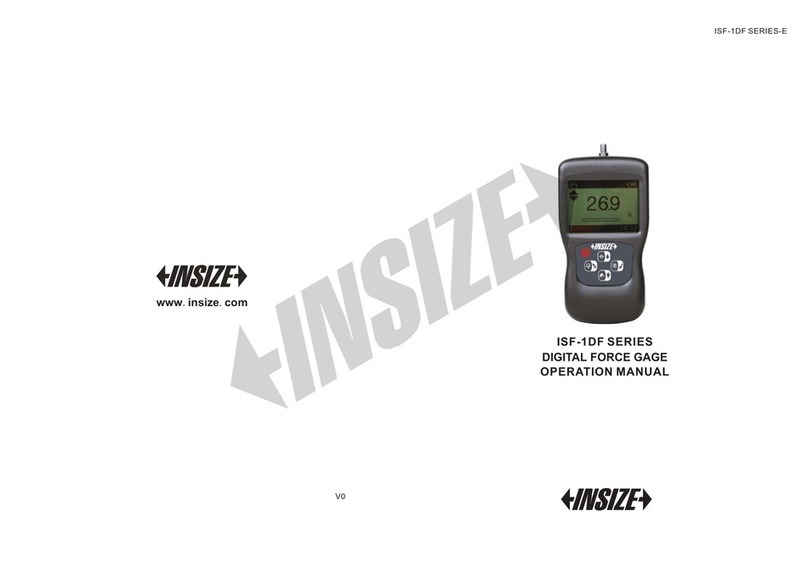
insize
insize ISF-1DF Series User manual
